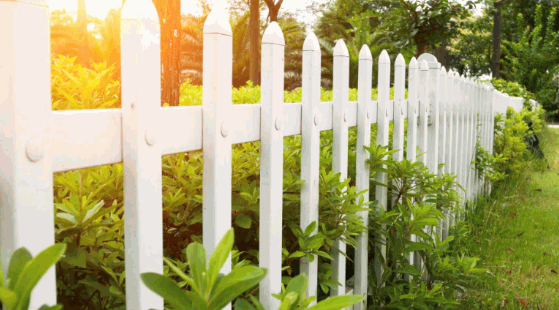
Fences are essential for providing security and privacy to your property, but they are not immune to damage.
In this article, we explore the common causes of a broken fence, how to assess the damage, the tools and materials needed for repairs, and step-by-step instructions for fixing different types of fences.
We discuss preventative measures to avoid future damage and when it may be necessary to call a professional for assistance. Whether your fence has fallen victim to age, weather, or accidental damage, we provide expert tips and advice.
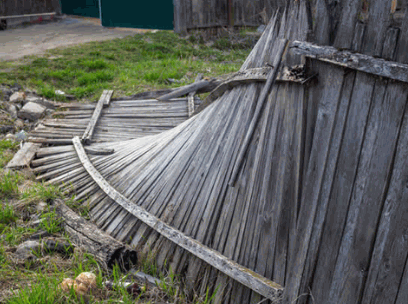
Table of Contents
Fence panels can break due to various reasons, including age and wear, extreme weather conditions like storms, and accidental damage, all of which can compromise the structural integrity of wooden fencing in a garden.
With time, fence panels and wooden fencing can deteriorate due to natural wear and exposure to elements, leading to problems like rot and mildew.
As wooden fencing ages, it undergoes a series of changes that can impact both its appearance and functionality.
The natural ageing process of wood involves weathering, which can cause cracks, warping, and discolouration.
These changes not only affect the structural integrity of the fence but also diminish its aesthetic appeal in the garden setting.
Homeowners should keep an eye out for signs of wear, such as peeling paint, splintering wood, or soft spots, as these can indicate more serious issues like rot and mildew infiltration. Regular maintenance and inspections are essential to prolong the lifespan of wooden fencing and preserve the overall visual charm of the outdoor space.
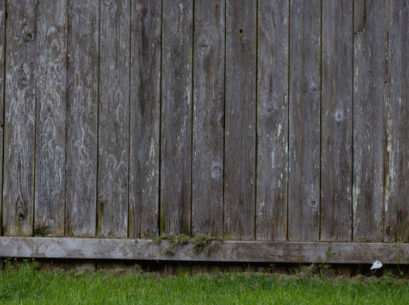
Extreme weather conditions, such as heavy storms and strong winds, can cause significant storm damage to fences, leading to broken panels and weakened structures.
When faced with intense storms, fences are particularly vulnerable to various forms of damage. The strong gusts of wind can easily break or bend fence posts, while heavy rainfall can saturate the soil and cause fence posts to lose stability over time. Prolonged exposure to moisture can lead to rot and decay in wooden fences, hastening their deterioration. It is crucial for homeowners to inspect their fences regularly and address any issues promptly to prevent further damage.
Accidental damage to fence panels can occur from various activities in the garden, such as lawn mowing, tree falling, or heavy objects being placed against the fence.
For example, the vibrations from a lawnmower can loosen fence panels over time, particularly if the fences are older or not properly secured. In the case of trees, their branches may break off during storms and crash into the fence, causing significant damage. Similarly, carelessly leaning heavy gardening equipment or tools against the fence can result in dents, scratches, or even structural weaknesses.
Assessing the damage of a broken fence is crucial for deciding whether to repair or replace it and involves:
Identifying the type of fence is the first step in assessing damage, as different materials such as wooden fencing have specific characteristics and maintenance needs.
One common type of fence panel frequently utilised in garden design is the classic wooden fence. Recognisable by their natural look and sturdy construction, wooden fences bring a rustic charm to outdoor spaces. They are susceptible to rot, mould, and insect damage, necessitating regular inspections and treatments to maintain longevity.
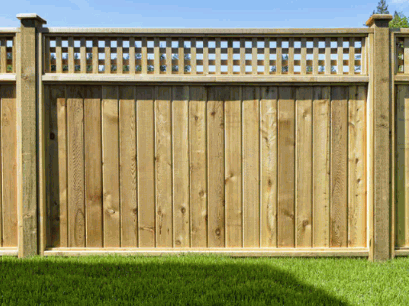
Inspecting the damage involves a thorough examination of the fence for signs of rot, mould, mildew, and physical damage to the posts and panels.
When scrutinising for signs of rot, keep an eye out for soft, spongy areas on the wood, which may indicate decay. Checking for mould involves looking for black, green, or white patches on the surface. It's crucial to probe the wood with a screwdriver to gauge its solidity.
Look for any loose or broken panels that may need immediate attention. For the fence posts, ensure they are firmly anchored in the ground and not leaning or showing signs of structural weakness.
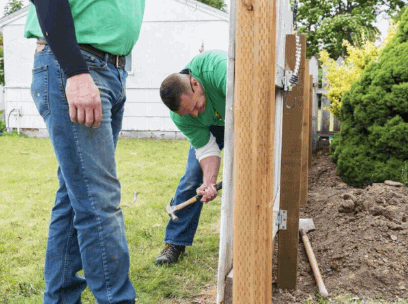
Determining the extent of the damage is essential to deciding whether to repair or replace the fence, taking into account the overall stability and appearance of the garden fencing.
When assessing the condition of your fence, look for signs of rot, warping, loose or missing boards, and leaning posts. These factors can indicate structural weakness that compromises the functionality and safety of the fence. Consider the age of the fence, as older fences may require more frequent repairs due to wear and tear.
Cost is a significant consideration in the decision-making process. Repairing a damaged fence may be a cost-effective option in the short term, but if the damage is extensive or recurrent, replacement could be a more practical long-term solution.
The aesthetic aspect plays a crucial role. A dilapidated fence can detract from the overall look of your garden. Assess whether the damage affects the visual appeal of your outdoor space and consider how different repair or replacement options can enhance or detract from the garden's beauty.
To mend a broken fence, you will need a variety of tools and materials, including clips, galvanized nails, a spirit level, mould remover, algae remover, and a pressure washer.
Clips are essential for securing any loose panels or posts in place during the repair process. Galvanized nails, known for their corrosion resistance, are used to reinforce the joints and strengthen the overall structure.
A spirit level ensures that the fence is correctly aligned and straightened, preventing any potential leaning or misalignment. Mould remover is crucial for treating any existing mildew or fungus growth on the fence, maintaining its durability and appearance.
Algae remover helps in getting rid of slippery algae build-up, making the fence safer and cleaner. A pressure washer is useful for deep cleaning and removing stubborn dirt or grime, restoring the fence's original shine and finish.
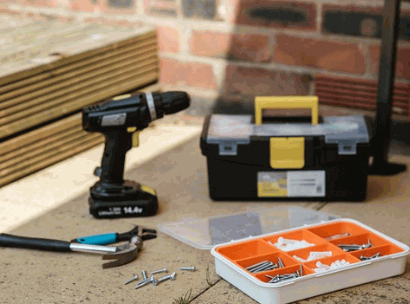
Discover more: What Is The Best Type Of Wood To Use For Fencing
Repairing a wooden fence typically involves replacing damaged fence panels and posts, and securing them with wooden arris rails and galvanised nails to ensure stability.
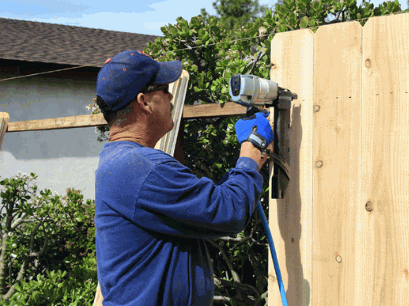
Fixing a chain link fence involves reattaching loose sections with clips and ensuring the fence is level using a spirit level to maintain even tension throughout the structure.
Regarding repairing a chain link fence, it's essential to inspect the entire length of the fence for any damaged sections that might need fixing. After identifying the loose areas, carefully place the clips in a position to secure the fence links. Properly aligning the fence using a spirit level is crucial as it ensures the fence remains stable and visually appealing. Regularly inspecting and tightening the clips will help prevent further damage and maintain the overall structural integrity of the fence.
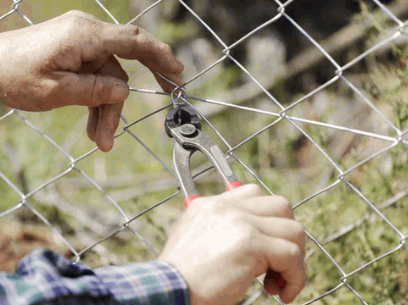
Replacing a damaged panel involves removing the old panel, preparing the posts for the new installation, and securing the new panel with galvanized nails for added durability.
Once the old panel is removed, inspect the posts for any damage or rot. If needed, reinforce or replace any weakened parts to provide a stable base for the new panel. Ensure the posts are set at the correct distance apart to accommodate the width of the new panel. Use a spirit level to make sure the posts are perfectly vertical before attaching the new panel.
When securing the new panel, opt for stainless steel screws instead of nails for longer-lasting results. Pre-drill holes to prevent splitting the wood and use washers to distribute the load evenly for a more secure attachment. Finish by applying a wood preservative or paint to protect the new panel from weather elements and extend its lifespan.
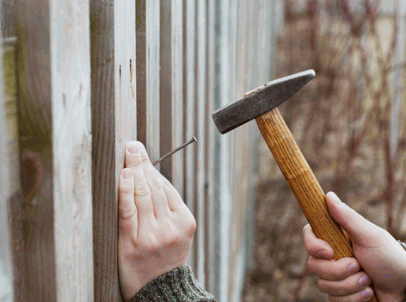
Preventing future fence damage involves:
Regular maintenance is key to extending the life of your fence and involves routine checks for signs of rot, mould, and mildew, as well as timely repairs to prevent minor issues from escalating.
By conducting regular inspections of your fence, you can catch any issues early on before they become costly problems. Look for signs of water damage, such as discolouration or soft spots, as this can indicate rot. Keep an eye out for any loose boards or rusted metal components that may need immediate attention.
It's also important to clean your fence regularly to prevent the build-up of dirt and debris, which can contribute to deterioration. A simple wash with soap and water can go a long way in preserving the appearance and structural integrity of your fence.
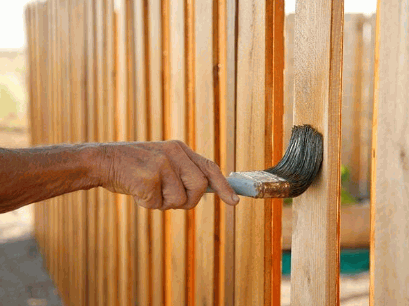
Reinforcing weak spots in the fence structure, such as loose posts or damaged arris rails, can significantly enhance its strength and longevity, using sturdy materials like steel and wooden arris rails to ensure durability.
Identifying weak points in the fence is essential to maintain its integrity. Loose posts can be a vulnerability that compromises the structure. Steel arris rails provide additional support compared to wooden ones, especially in areas prone to high winds or wear. Utilising galvanised nails for fastening ensures a secure connection between the rails and posts, reducing the risk of instability. Regular inspections can help prevent potential issues, allowing for timely repairs and upkeep to prolong the fence's lifespan.
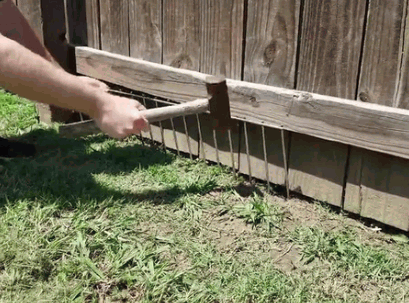
Protecting your fence against extreme weather involves applying exterior wood paint to shield it from moisture and UV damage, and taking additional measures to brace it against storms and high winds.
Using high-quality exterior wood paint not only enhances the aesthetic appeal of your fence but also forms a protective barrier against harsh weather conditions. The paint acts as a sealant, preventing water infiltration that could lead to rotting or warping of the wood.
Along with painting, reinforcing the fence by installing sturdy braces and anchor points can help withstand strong gusts during storms. Ensuring the fence posts are securely anchored into the ground and using weather-resistant materials for repairs can prolong the lifespan of your fence.
Knowing when to call a professional for fence repair or replacement can save you time and money, especially for extensive damage that requires expert assessment and solutions, which you can find on platforms like Checkatrade.
Severe post damage from storms or rot that compromises the fence's stability is a critical indicator for seeking professional assistance. In such cases, a professional can evaluate the extent of the damage and recommend the best course of action to ensure the safety and longevity of your fence.
Complex repairs involving specialised tools or materials are best handled by experienced professionals who have the expertise to execute the job effectively. Opting for professional help in situations like these can prevent issues from escalating and result in a durable, well-executed restoration.
When looking for reliable professionals, Checkatrade offers a convenient platform to access vetted service providers with verified reviews, making it easier to find trustworthy individuals or companies for your fence repair needs. Considering the cost factors, while important, should not be the sole determining factor; prioritising quality workmanship and credibility ensures a satisfactory outcome for your fencing project.